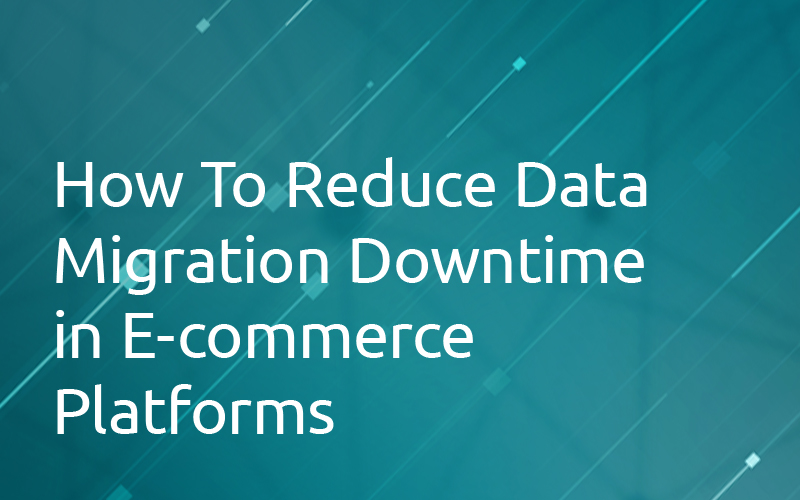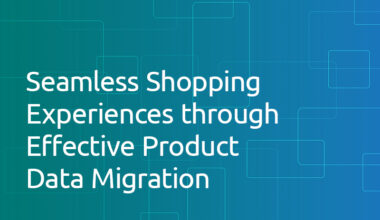Embarking on the journey of data migration in e-commerce necessitates a strategic approach to minimize downtime and ensure a seamless transition. For businesses operating in the digital realm, where transactions occur at the blink of an eye, the stakes are high. Let’s delve into an in-depth exploration of effective strategies tailored for e-commerce technical users and brand owners to significantly reduce data migration downtime.
Unveiling the Significance of Downtime Reduction
In the complex ecosystem of e-commerce, downtime during data migration isn’t merely a pause in operations; it’s a potential risk to customer satisfaction and revenue streams. Picture this: a customer trying to make a purchase encountering a temporarily inaccessible platform. The implications are immediate and impactful. Recognizing this, businesses must prioritize downtime reduction as a cornerstone of their migration strategy.
Crafting a Comprehensive Migration Blueprint
A successful data migration begins not with a single click but with a meticulous blueprint. Before diving into the technicalities, a comprehensive planning and assessment phase is crucial. Imagine this phase as the architectural drawing for your digital infrastructure. Conducting a thorough audit of your existing system, setting clear migration objectives, and crafting a detailed timeline are akin to laying the foundation for a resilient structure.
- Audit Beyond Surface: Uncover the intricacies of your existing infrastructure, identifying potential challenges and bottlenecks that might be hidden beneath the surface.
- Define with Precision: Migration objectives should be laser-focused, whether it’s elevating performance, embracing new features, or ensuring compliance. Precision is the key.
- Timeline as a Roadmap: The timeline is not just a schedule; it’s a roadmap. Allocate time for testing, resolving issues, and ensure that each phase aligns seamlessly with the overarching migration strategy.
The Power of Tools and Technology in Downtime Mitigation
Transitioning from the planning phase to execution requires the right set of tools and technology. Imagine these as the advanced machinery ensuring a swift and efficient construction process. In the e-commerce universe, automated migration tools and cloud-based solutions play a pivotal role.
- Automated Precision: Automation isn’t just about speed; it’s about precision. Automated migration tools significantly reduce the risk of human error, ensuring accuracy in the migration process.
- Cloud’s Adaptive Flexibility: The cloud isn’t just a storage solution; it’s an adaptive, flexible platform. Leveraging cloud-based solutions provides scalability without compromising on security, offering a robust foundation for data transfer.
Ensuring Data Accuracy through Verification and Validation
Data accuracy is the bedrock of e-commerce operations. Think of data migration as a delicate surgery; thorough verification and validation processes are essential for a successful outcome. Picture these processes as the meticulous checks and balances in place before, during, and after surgery.
- Cleansing for Purity: Just as a surgeon cleanses the operating area, data cleansing identifies and eliminates impurities – duplicate or outdated data – ensuring a pristine database.
- Validation as Vigilance: Continuous validation checks are the vigilant eyes during and after migration, safeguarding the integrity of the data. This isn’t just about quantity; it’s about the quality of your database.
Testing: The Litmus Test for Success
Testing is not a mere formality; it’s the litmus test for the success of your migration strategy. Imagine this phase as the comprehensive trials before a grand performance.
- Staging for Realism: The staging environment isn’t a rehearsal hall; it’s a replica of the real performance space. Testing in this environment ensures that the migration aligns seamlessly with the production environment.
- User Acceptance as Audience Feedback: User acceptance testing isn’t just a checkbox; it’s inviting your audience to provide feedback. Involving end-users ensures that the migration isn’t just technically flawless but also user-friendly.
Strategic Rollback Planning: A Safety Net
Despite meticulous planning, challenges can arise. Think of a rollback plan as the emergency exit – a safety net that ensures a swift response to unexpected hiccups.
- Snapshot Backups as Lifelines: Creating snapshot backups isn’t just a precaution; it’s a lifeline during unexpected challenges. These regular backups enable a quick rollback to a stable state.
- Communication Protocol as Emergency Response: A clear communication protocol isn’t just a guideline; it’s an emergency response plan. Stakeholders need to be informed promptly about potential issues and the activation of the rollback plan.
Timed Precision: Scheduling Migration for Minimal Impact
Choosing the right time for migration is not a casual decision; it’s strategic timing for minimal impact on customers and operations. Consider this as orchestrating a grand performance during the most receptive hours.
- Off-peak as Prime Time: Scheduling migration during off-peak hours isn’t just about convenience; it’s making the most of prime time for your business. Minimizing user activity during migration ensures a smoother transition.
Empowering the Team: Training and Documentation
Success in data migration isn’t a solo act; it’s a collaborative effort. Imagine your team as the ensemble cast in a blockbuster movie. Empowering them with the right skills and knowledge ensures a stellar performance.
- Training as Rehearsal: Training programs aren’t just workshops; they’re rehearsals for the big show. Providing your team with the skills they need ensures they are well-prepared for their roles in the migration process.
- Documentation as the Script: Comprehensive documentation isn’t just paperwork; it’s the script. It minimizes the learning curve for your team, ensuring they play their roles seamlessly.
Post-migration Vigilance: Continuous Monitoring and Support
The curtains may fall, but the show continues. Post-migration vigilance ensures that the performance remains flawless even after the grand finale.
- Real-time Monitoring as Surveillance: Implementing real-time monitoring tools isn’t just surveillance; it’s proactive security. Detecting and addressing issues in real-time ensures uninterrupted business operations.
- 24/7 Support as the Emergency Response Team: A 24/7 support team isn’t just customer service; it’s the emergency response team. Their availability around the clock is the assurance that any unexpected challenges will be addressed promptly.
Conclusion: Orchestrating the Symphony of Data Migration
In the intricate symphony of e-commerce data migration, each element plays a crucial role. From the meticulous planning and assessment to the strategic use of tools and technology, and the continuous support post-migration, success lies in the orchestration of these elements. As the conductor of this symphony, geekspeak Commerce can help you master the art of data migration, ensuring a seamless performance for your e-commerce platform.
Connect with Retail Taxonomy to unlock the full potential of your e-commerce platform and explore how downtime reduction can be a catalyst for your business’s success.
 1.416.619.5349 Ext.325
1.416.619.5349 Ext.325 







